David Owens led a walk to look at Loddon Lilies on the morning of Sunday 2 April. Meeting point was the car park of Showcase Cinema at Winnersh. Following weeks of rain, with particularly heavy and long-lasting rain on the preceding Friday, water levels were high and the River Loddon, which runs along the west side of the car park, had overflowed its banks. Much of the car park was under water and the planned route was impassable. After a brief debate, an alternative starting point at the main car park of Dinton Pastures Country Park was decided on. Before starting the walk, David described the main differences between the native Loddon Lily Leucojum aestivum subsp. aestivum and the garden plant, subsp. pulchellum. The garden plant has 2-4 flowers on each flowering stem, while the native plant has 3-5 flowers. The spathe (a large bract which encloses the inflorescence) is 4-7mm wide in the garden plant and 7-11mm wide in the native plant. The flower stem of pulchellum is smooth, while for aestivum it has sparse tiny teeth. While the group waited in the car park, a Mistle Thrush sang from the top of a nearby tree and a Grey Heron with nesting material in its bill flew overhead.
First stop on the revised route was Black Swan Lake, where Mute Swan, Canada Goose, Coot, Mallard and a single Common Tern were seen. The walk continued past White Swan Lake, where Chiffchaffs were calling, a singing Blackcap was heard and Tufted Duck, Wren, Long-tailed Tit, Jay and yellow Coltsfoot flowers were amongst the sightings. A pair of Great Crested Grebes was nesting here, with one bird on the nest and the other nearby. The track led to a bridge over the Loddon and at this point, the riverside path was above flood level. Turning upstream, a number of clumps of Loddon Lilies were growing at the edge of the river. Most were partly under water, but a few accessible plants were found. With a hand lens, it was possible to see the sparse tiny teeth along the edge of the flower stem and they could be felt by running fingers gently up and down the stem. The width of the spathe of one of the flower stems was measured and it proved to be >7 mm, confirming that these were the native plants, subsp. aestivum. The walk continued upstream for a short distance until extensive flooding blocked further progress. The group then walked back to the bridge and crossed the river. The water was brown and fast flowing, with some foam on the surface. A member of the group with a good sense of smell claimed to be able to smell traces of sewage, and a phone app confirmed that many Thames Water sewage stations were currently discharging raw sewage, including one upstream on the River Blackwater.
Continuing on the far side of the bridge, the track led through damp woodland with many willows. Flowers on the male trees were yellow, while those on the female trees were green. A number of bright red Scarlet Elfcup fungi were spotted down on the ground. The track opened onto a grassy area with shallow pools where Black-headed Gulls were calling loudly. Some, with black caps, were in full summer plumage, while others were still in their winter plumage. Once again, the route was blocked by flood water so everyone turned round and headed back towards the start. Some of the group had shared cars for the drive between Showcase Cinema and Dinton Pastures. Back at the Showcase cinema car park, they watched a Blue Tit building a nest in the post for a road sign.
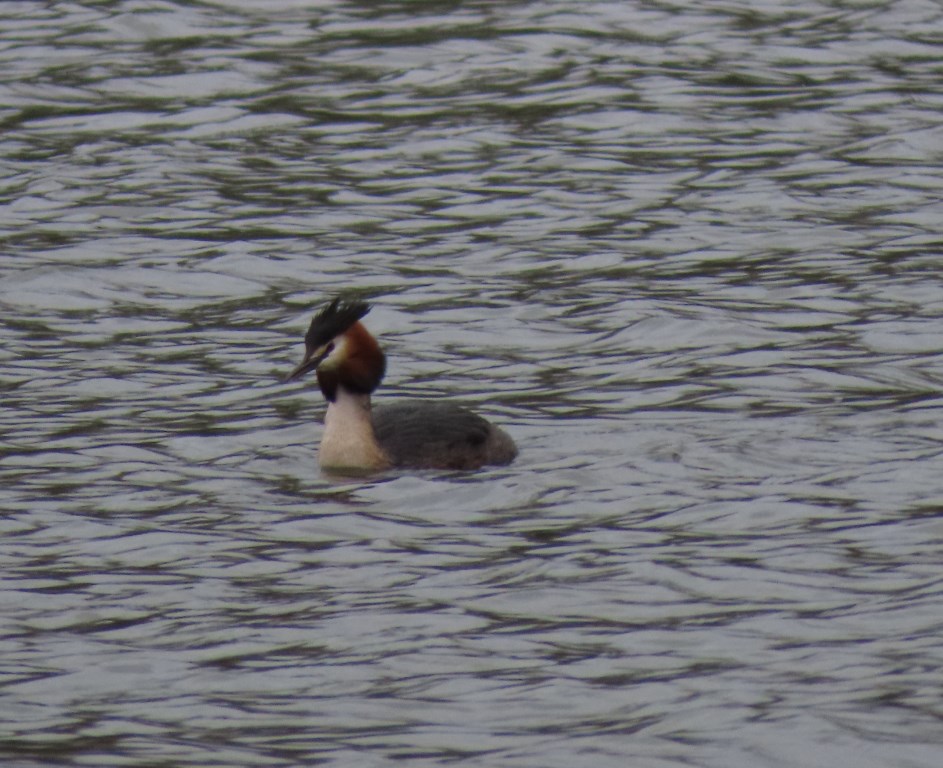
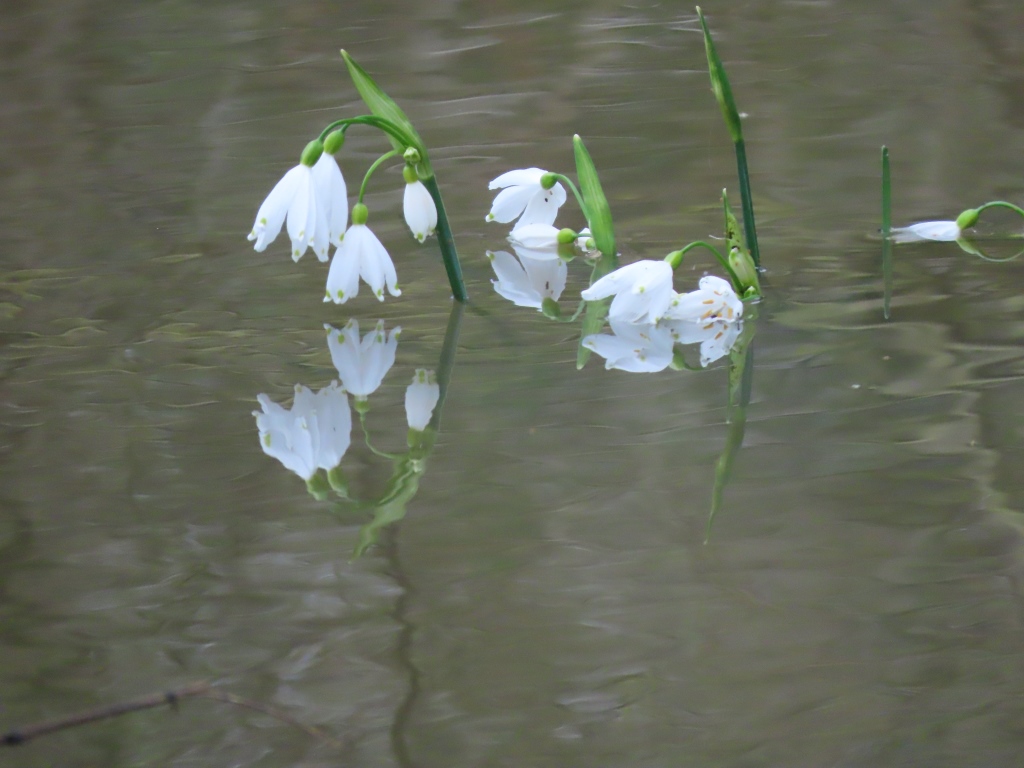
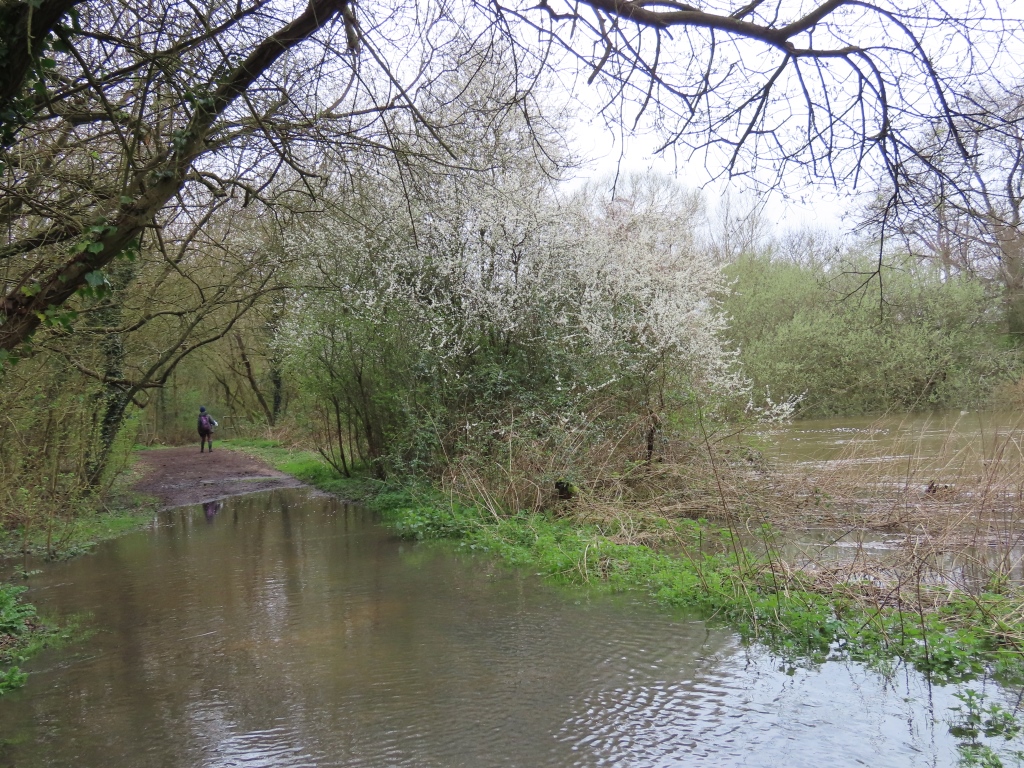

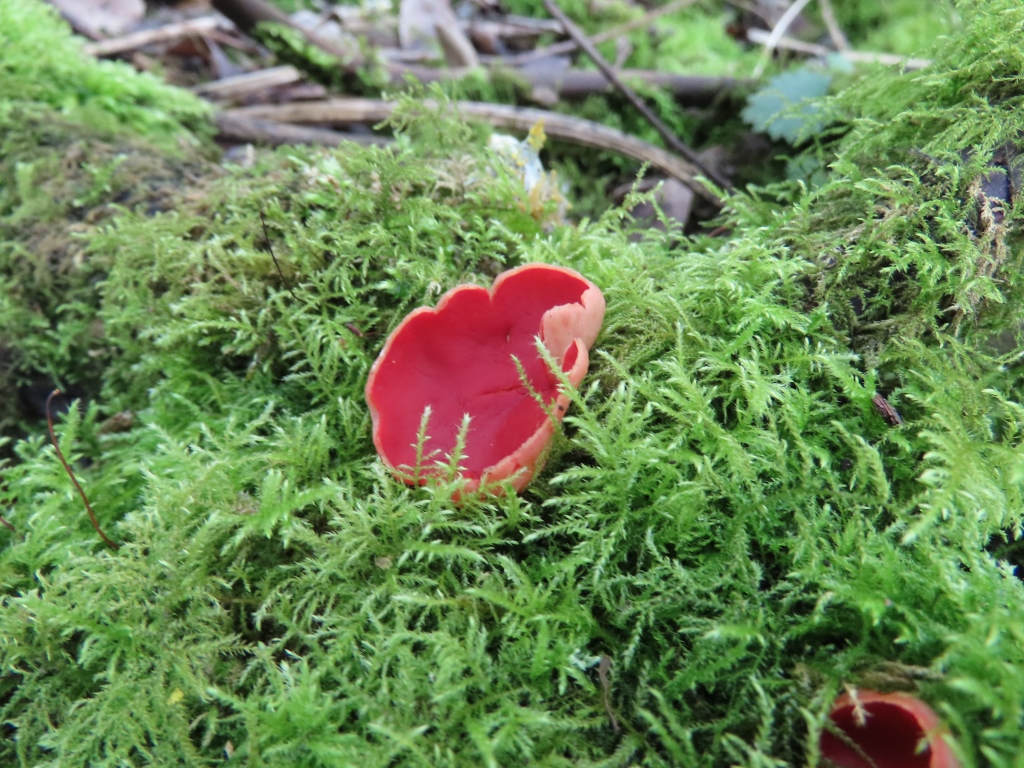
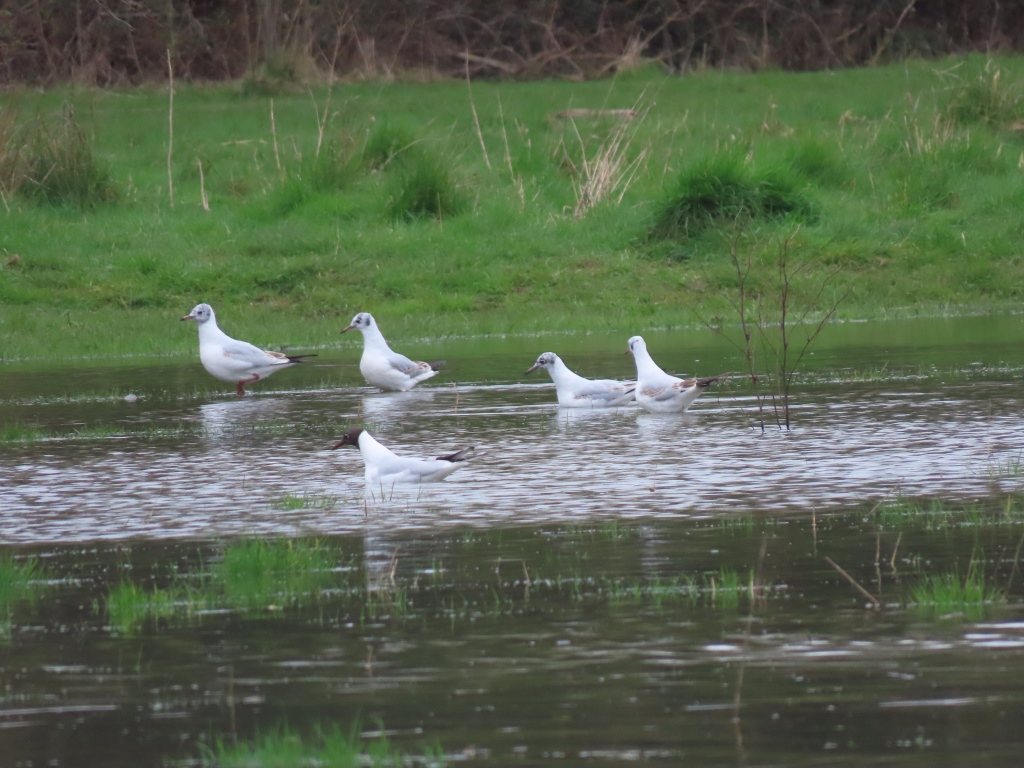
Pictures by Fiona Brown
